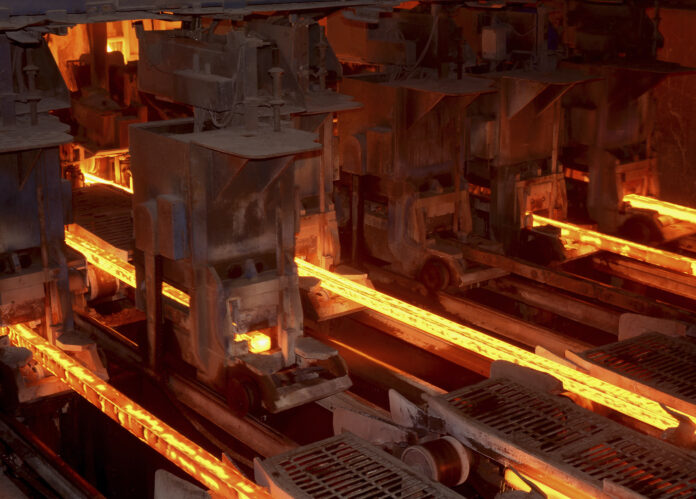There are a few sentences that stick out in the 2020 annual report of steel manufacturer Dost Steel. They are reproduced here (emphasis ours): “The global outbreak of COVID 19 pandemic and the dynamics of industry have witnessed paradigm shift coming with their own pros and cons. But still it may not be out of place to endorse here that steel sector seems to enjoy the atrociously rare luxury of being positively impacted. This presents Dost Steels Limited a remarkable set of opportunities to thrive upon. To materialize those opportunities into promising results, it needs anticipation, reactiveness and primarily your confidence in the company.”
Yes indeed, the lucky break that the steel sector has gotten has been atrociously rare. You know what else is atrocious? The general health of Dost Steel. A close look at its financials suggest a pattern of ‘everything that could go wrong, did go wrong’. It will need more than confidence and anticipation to save Dost Steel. It will probably need a miracle (which the government construction package might just be, though more on that in a bit).
Some background first: what exactly is Dost Steel? The company was incorporated in March 2004, and then converted into a public limited company from 2006, and listed on the Pakistan Stock Exchange Limited in 2007. Dost Steel manufactures steel, direct reduced iron, sponge iron, hot briquetted iron, carbon steel, pig iron, special alloy steel in different forms. Its head office is in Lahore, while its plant is in Phoolnagar.
It was a tough time to start a steel company. According to Dost Steel, the company “continued in its default of all of its debt obligations caused due to reason beyond its control, one of the basic causes being the international markets turmoil of 2008, which happened at a very critical stage of your company’s life.”
Thus began a long and protracted arguments with banks. Indeed, much of Dost Steel’s history is marked less by the actual production of steel, and more of its dysfunctional relationship with lenders. Consider in 2015, that the Pak Kuwait Investment Company claimed recovery of Rs122.197 million, and that Faysal Bank asked for the recovery Rs.1,287,947,181.
Things got so bad that year that the Sindh High Court passed an order for the liquidation of the company, based on a petition filed by one of the creditors of the company. In fcat, the only reason Dost Steel still exists is because the Supreme Court of Pakistan accepted the appeal filed by the company’s directors, and dismissed the case.
The company then failed to commence operations, up until February 2018. But the company had been accruing losses for so long, that even the sales it did make never seemed to be able to bring it out of what seemed like a permanent slump. Consider: it made a loss of Rs88 million in 2014, Rs98 million in 2015, Rs30 million in 2016, Rs81 million in 2017, Rs103 million in 2018, Rs313 million in 2019, and finally, Rs214 million in 2020. It had stopped production altogether in 2019, and its number of employees dropping from 131 in 2019, to just 33 in 2020.
At each step of the way, Dost Steel featured much hand wringing and anxiety. No matter what was going on in the domestic or international steel market, Dost Steel always suffered from some variation of the following: “The company could not be able to achieve a desirable level of production to convert adequate profitability and produce favorable cash flows owing to shortage of working capital/financing. Once this inventory of finished goods has been built up and customer’s requirements are adequately fulfilled, it will be possible to achieve a desirable sales cycle in the coming year.”
Exactly which coming year? Neither Dost Steel can say with any confidence – and nor could the auditors. In the latest annual report of 2020, the auditors did not mince words.
By 2020, Dost Steel had accumulated astonishing losses of Rs1,240 million. The liabilities of the company exceeded its current assets by Rs 408 million, and liquid assets by Rs466 million.
The auditors pointed out that Dost Steel had been facing long overdue receivables, unfavorable key financial ratios, and difficulty in complying with the terms of loan agreement with banks. “The company is in default under its syndicated contractual obligation with bankers as it could not pay any of the four installments totaling to Rs 46.5 million during the year and was unable to obtain additional finance.” the auditors noted. There are also banking litigations against the company. The auditors also culd not physically verify the inventory of the company either.
And that is why, the auditors said that there was “significant doubt on ability of the company to continue as going concern”.
Is there any miracle for Dost Steel? Perhaps: as the report noted, the steel industry was somewhat spared. In April of this year, the government of Pakistan announced an incentive package for the real estate and construction industry. The industry will also have a fixed tax regime – more akin to a sales tax – instead of taxes on profits. Additionally, the central bank has asked commercial banks to allocate 5% of their total lending to the construction sector. As overall demand for gray steel bars is expected to start rising rapidly, there may yet be a positive spillover on Dost Steel. It will need all the help it can get.





































THE Steel Mill In Lahore Increased Yet Did Company .